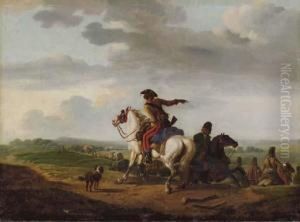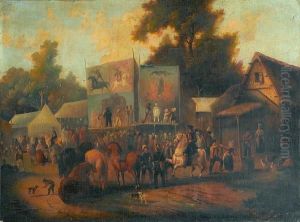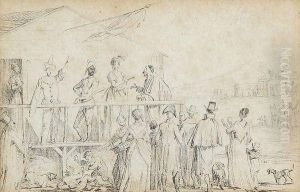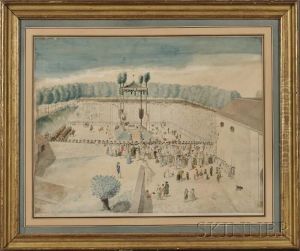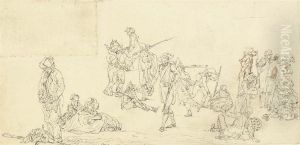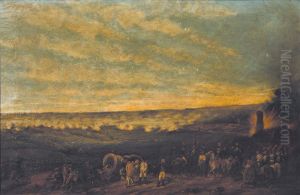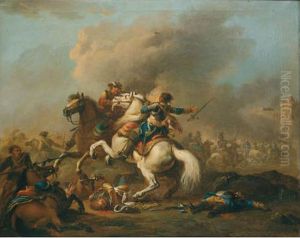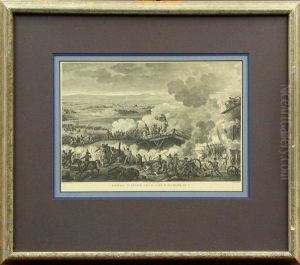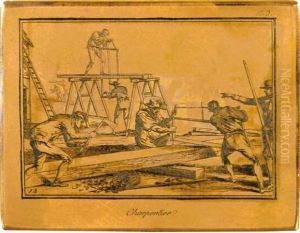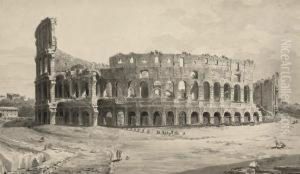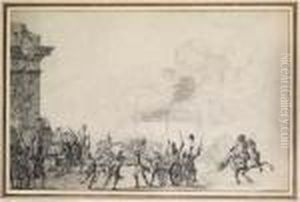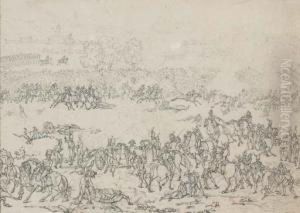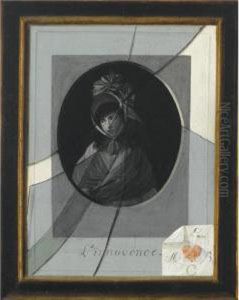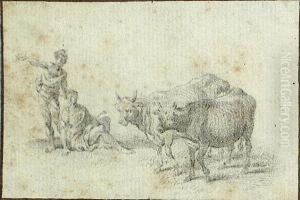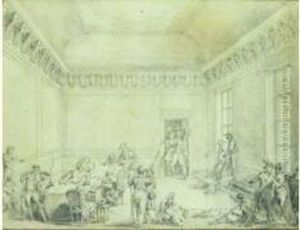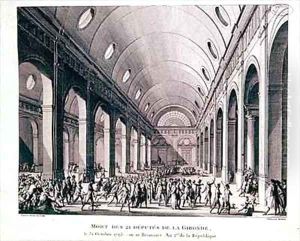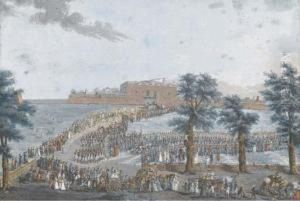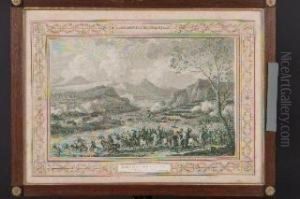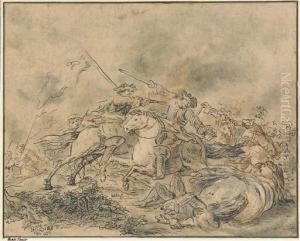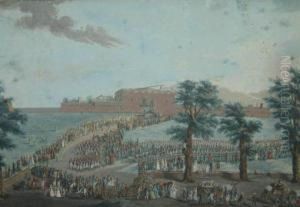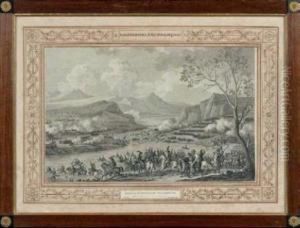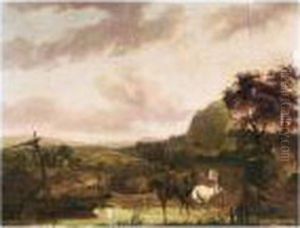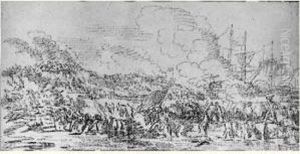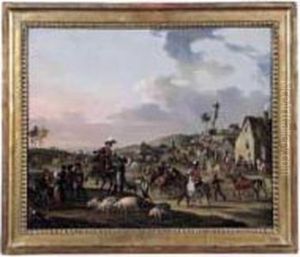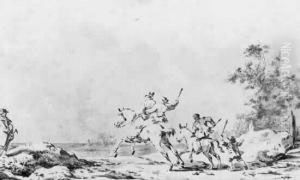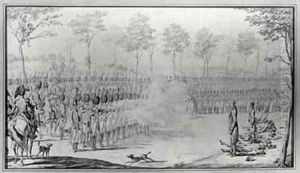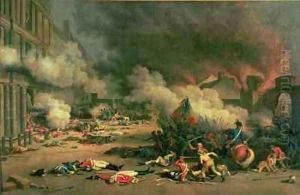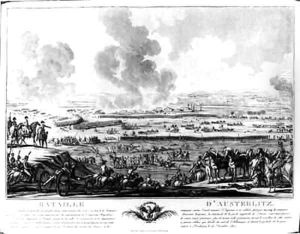Jean Duplessi-Bertaux Paintings
Jean Duplessi-Bertaux was a French artist known primarily for his etchings and engravings that documented historical events, particularly those occurring during the French Revolution. Born in 1747, Duplessi-Bertaux's career spanned a tumultuous period in French history which provided ample subject matter for his works.
He initially trained under the engraver Jean-Georges Wille, a prominent figure in the Parisian art world. Duplessi-Bertaux's early works were mostly portraits and genre scenes, but he gained recognition for his series of etchings depicting events of the French Revolution. His illustrations served as visual commentary on the political and social upheavals of his time.
Duplessi-Bertaux's work is often characterized by its detailed representation of events and its dedication to realism, making his engravings valuable historical resources. He sought to capture the spirit of the Revolution, not just through the grand, pivotal moments, but also through the everyday experiences of the people. His engravings appeared in various publications, and he worked on a notable series called 'Tableaux historiques de la Révolution Française' which was a comprehensive pictorial history of the French Revolution.
Despite his focus on documenting contemporary events, Duplessi-Bertaux also produced works with allegorical and mythological subjects. However, these were not as prominent nor as impactful as his revolutionary scenes. His devotion to capturing the essence of the Revolution was not only an artistic endeavor but also a political statement, aligning him with the revolutionary cause.
Jean Duplessi-Bertaux's contributions to the art world are also significant in the context of printmaking. His engravings helped to disseminate images across France and beyond, allowing a wider public to engage with the political discourse of the time.
He died in 1819, leaving behind a legacy as a chronicler of one of the most significant periods in French history. His works continue to be studied by historians and art scholars for their intricate detail and historical accuracy, providing a window into the French Revolution for contemporary audiences.
